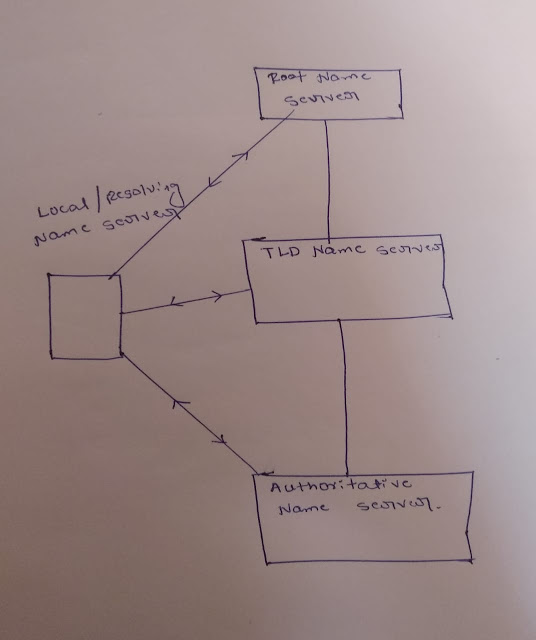Domain Name System:
"It's a type of server which provides IP address of websites ".
So basically domain name system is a server which returns the IP address if we give the name of website to .
We all know that the computers only understands the number system i e : they don't understand the English or any other language . And it is impossible for us to remember the IP addresses of all the websites which we will be using in our daily life like Facebook, Instagram,whats app,twitter,You tube, OR any other website commercial or non commercial.
So people started working on an issue to come with a solution such that , we will create a system which will give us with IP address of a website if we give its name to that system and thus a DNS (Domain Name System) is created to help human beings in their work.
NOW if we search Facebook in our device then it will send request to local DNS server to send the IP address of Facebook , once it receives the IP address then communication will be established easily between the server and end device willing to use it .
How Many DNS Servers Are There:
If we consider in international level then there are totally "13" DNS servers which contains huge data about different servers .
Then on national level if we talk about INDIA then it contains around 140 but this number include both private and public servers.
below list shows some of important servers in India ....
How It Works:
If we see closely there are steps in servers as we can see in our below figure
1) The one at top is called as "Root name server" which contains the information of words like .com, .org, .nic, etc .
2) The next one is "Top Level Domain Server" which contains the names of popular websites like Facebook , Instagram etc.
3) The last one in queue is the "Authoritative name server" which contains the host level names addresses .
4) Below all these there is another server "local server" which is basically setup by the particular institution to handle there own traffic .
WORKING:
Assume you want to go to website "www. Facebook.com " the steps involved in this process are....
1) Initially the computer or any other device in which we are browsing the internet will ask the local server for IP address . It checks in its cache memory for address , if it finds address there then it is fine it returns it to computer.
2) otherwise it will send a quarry to "root server" asking for IP address , but root does not contain the IP address , but it will tell the local server to whome it should ask to know the address. so it suggests to ask to "TLD server" .
3) Now the quarry is send to TLD server asking the same question ie IP address of Facebook , but here also it does not contain the address , it will also suggest to go to "Authoritative name server".
4) In its final step local server asks the "Authoritative name server" , now this contains the required IP address and send it to the local server . Then it will be given to computer or any other device which is requesting in our case we have taken it as computer.
BUT the local server does an smart work to avoid all these steps of asking to all higher level servers , "It stores the IP address of most recently asked websites in its cache memory " so that it will give the addresses immediately as and when required.





gffctyfvg
ReplyDelete